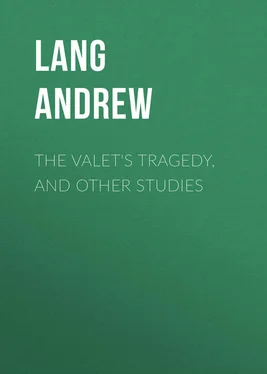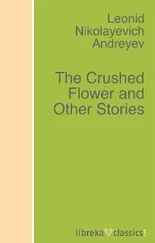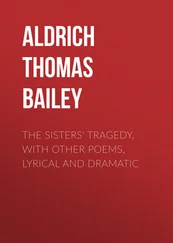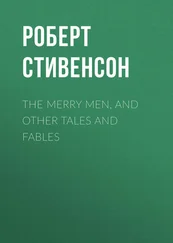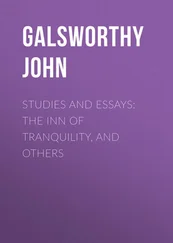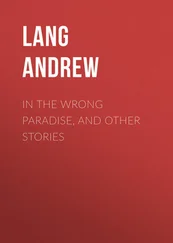Andrew Lang - The Valet's Tragedy, and Other Studies
Здесь есть возможность читать онлайн «Andrew Lang - The Valet's Tragedy, and Other Studies» — ознакомительный отрывок электронной книги совершенно бесплатно, а после прочтения отрывка купить полную версию. В некоторых случаях можно слушать аудио, скачать через торрент в формате fb2 и присутствует краткое содержание. Издательство: Иностранный паблик, Жанр: foreign_antique, foreign_prose, на английском языке. Описание произведения, (предисловие) а так же отзывы посетителей доступны на портале библиотеки ЛибКат.
- Название:The Valet's Tragedy, and Other Studies
- Автор:
- Издательство:Иностранный паблик
- Жанр:
- Год:неизвестен
- ISBN:нет данных
- Рейтинг книги:4 / 5. Голосов: 1
-
Избранное:Добавить в избранное
- Отзывы:
-
Ваша оценка:
- 80
- 1
- 2
- 3
- 4
- 5
The Valet's Tragedy, and Other Studies: краткое содержание, описание и аннотация
Предлагаем к чтению аннотацию, описание, краткое содержание или предисловие (зависит от того, что написал сам автор книги «The Valet's Tragedy, and Other Studies»). Если вы не нашли необходимую информацию о книге — напишите в комментариях, мы постараемся отыскать её.
The Valet's Tragedy, and Other Studies — читать онлайн ознакомительный отрывок
Ниже представлен текст книги, разбитый по страницам. Система сохранения места последней прочитанной страницы, позволяет с удобством читать онлайн бесплатно книгу «The Valet's Tragedy, and Other Studies», без необходимости каждый раз заново искать на чём Вы остановились. Поставьте закладку, и сможете в любой момент перейти на страницу, на которой закончили чтение.
Интервал:
Закладка:
*A rather different account by the two original finders, Bromwell and Walters, is in L’Estrange’s Brief History, iii. pp. 97, 98. The account above is the landlord’s. Lords’ MSS., Hist. MSS. Com., xi. pp.
2, 46, 47.
The delay was the more singular if, as one account avers, the men had not only observed the cane and scabbard outside of the ditch, on the bank, but also a dead body within the ditch, under the brambles.* By five o’clock the rain had ceased, but the tempestuous evening was dark, and it was night before Constable Brown, with a posse of neighbours on foot and horseback, reached the ditch. Herein they found the corpse of a man lying face downwards, the feet upwards hung upon the brambles; thus half suspended he lay, and the point of a sword stuck out of his back, through his black camlet coat.** By the lights at the inn, the body was identified as that of Sir Edmund Berry Godfrey, a Justice of the Peace for Westminster, who had been missing since Saturday October 12. It is an undeniable fact that, between two and three o’clock, before the body was discovered and identified, Dr. Lloyd, Dean of St. Asaph’s, and Bishop Burnet, had heard that Godfrey had been found in Leicester Fields, with his own sword in his body. Dr. Lloyd mentioned his knowledge in the funeral sermon of the dead magistrate. He had the story from a Mr. Angus, a clergyman, who had it from ‘a young man in a grey coat,’ in a bookseller’s shop near St. Paul’s, about two o’clock in the afternoon. Angus hurried to tell Bishop Burnet, who sent him on to Dr. Lloyd.*** Either the young man in the grey coat knew too much, or a mere rumour, based on a conjecture that Godfrey had fallen on his own sword, proved to be accurate by accident; a point to be remembered. According to Roger Frith, at two o’clock he heard Salvetti, the ambassador of the Duke of Tuscany, say: ‘Sir E. Godfrey is dead… the young Jesuits are grown desperate; the old ones would do no such thing.’ This again may have been a mere guess by Salvetti.****
*Pollock, Popish Plot, pp. 95, 96.
**Brown in Brief History, iii. pp. 212-215, 222.
***L’Estrange, Brief History, iii. pp. 87-89.
****Lords’ MSS. p. 48, October 24.
In the circumstances of the finding of the body it would have been correct for Constable Brown to leave it under a guard till daylight and the arrival of surgical witnesses, but the night was threatening, and Brown ordered the body to be lifted; he dragged out the sword with difficulty, and had the dead man carried to the White House Inn. There, under the candles, the dead man, as we said, was recognised for Sir Edmund Berry Godfrey, a very well-known justice of the peace and wood and coal dealer. All this occurred on Thursday, October 17, and Sir Edmund had not been seen by honest men and thoroughly credible witnesses, at least, since one o’clock on Saturday, October 12. Then he was observed near his house in Green Lane, Strand, but into his house he did not go.
Who, then, killed Sir Edmund?
The question has never been answered, though three guiltless men were later hanged for the murder. Every conceivable theory has been tried; the latest is that of Mr. Pollock: Godfrey was slain by ‘the Queen’s confessor,’ Le Fevre, ‘a Jesuit,’ and some other Jesuits, with lay assistance.* I have found no proof that Le Fevre was either a Jesuit or confessor of the Queen.
*Pollock, The Popish Plot, Duckworth, London, 1903.
As David Hume says, the truth might probably have been discovered, had proper measures been taken at the moment. But a little mob of horse and foot had trampled round the ditch in the dark, disturbing the original traces. The coroner’s jury, which sat long and late, on October 18 and 19, was advised by two surgeons, who probably, like the rest of the world, were biassed by the belief that Godfrey had been slain ‘by the bloody Papists.’ In the reign of mad terror which followed, every one was apt to accommodate his evidence, naturally, to that belief. If they did not, then, like the two original finders, Bromwell and Walters, they might be thrown, heavily ironed, into Newgate.*
*Lords’ MSS. P. 47, note 1.
But when the Popish Plot was exploded, and Charles II. was firm on his throne, still more under James II., every one was apt to be biassed in the opposite direction, and to throw the guilt on the fallen party of Oates, Bedloe, Dugdale, and the other deeply perjured and infamous informers. Thus both the evidence of 1678-1680, and that collected in 1684-1687, by Sir Roger L’Estrange, J.P. (who took great trouble and was allowed access to the manuscript documents of the earlier inquiries), must be regarded with suspicion.*
*L’Estrange, Brief History of the Times, London, 1687.
The first question is cui bono? who had an interest in Godfrey’s death? Three parties had an interest, first, the Catholics (IF Godfrey knew their secrets); next, the managers of the great Whig conspiracy in favour of the authenticity of Oates’s Popish Plot; last, Godfrey himself, who was of an hereditary melancholy (his father had suicidal tendencies), and who was involved in a quandary whence he could scarcely hope to extricate himself with life and honour.
Of the circumstances of Godfrey’s quandary an account is to follow. But, meanwhile, the theory of Godfrey’s suicide (though Danby is said to have accepted it) was rejected, probably with good reason (despite the doubts of L’Estrange, Hume, Sir George Sitwell, and others), by the coroner’s jury.*
*Sitwell, The First Whig, Sacheverell.
Privately printed, 1894, Sir George’s book – a most interesting volume, based on public and private papers – unluckily is introuvable. Some years have passed since I read a copy which he kindly lent me.
The evidence which determined the verdict of murder was that of two surgeons. They found that the body had been severely bruised, on the chest, by kicks, blows of a blunt weapon, or by men’s knees. A sword-thrust had been dealt, but had slipped on a rib; Godfrey’s own sword had then been passed through the left pap, and out at the back. There was said to be no trace of the shedding of fresh living blood on the clothes of Godfrey, or about the ditch. What blood appeared was old, the surgeons averred, and malodorous, and flowed after the extraction of the sword.
L’Estrange (1687) argues at great length, but on evidence collected later, and given under the Anti-Plot bias, that there was much more ‘bloud’ than was allowed for at the inquest. But the early evidence ought to be best. Again, the surgeons declared that Godfrey had been strangled with a cloth (as the jury found), and his neck dislocated. Bishop Burnet, who viewed the body, writes (long after the event): ‘A mark was all round his neck, an inch broad, which showed he was strangled… And his neck was broken. All this I saw.‘*
*Burnet, History of his own Time, ii. p. 741. 1725.
L’Estrange argued that the neck was not broken (giving an example of a similar error in the case of a dead child), and that the mark round the neck was caused by the tightness of the collar and the flow of blood to the neck, the body lying head downwards. In favour of this view he produced one surgeon’s opinion. He also declares that Godfrey’s brothers, for excellent reasons of their own, refused to allow a thorough post-mortem examination. ‘None of them had ever been opened,’ they said. Their true motive was that, if Godfrey were a suicide, his estate would be forfeited to the Crown, a point on which they undoubtedly showed great anxiety.
Evidence was also given to prove that, on Tuesday and Wednesday, October 15 and 16, Godfrey’s body was not in the ditch. On Tuesday Mr. Forsett, on Wednesday Mr. Harwood had taken Mr. Forsett’s harriers over the ground, in pursuit of the legendary hare. They had seen no cane or scabbard; the dogs had found no corpse. L’Estrange replied that, as to the cane, the men could not see it if they were on the further side of the bramble-covered ditch. As to the dogs, they later hunted a wood in which a dead body lay for six weeks before it was found. L’Estrange discovered witnesses who had seen Godfrey in St. Martin’s Lane on the fatal Saturday, asking his way to Paddington Woods, others who had seen him there or met him returning thence. Again, either he or ‘the Devil in his clothes’ was seen near the ditch on Saturday afternoon. Again, his clerk, Moore, was seen hunting the fields near the ditch, for his master, on the Monday afternoon. Hence L’Estrange argued that Godfrey went to Paddington Woods, on Saturday morning, to look for a convenient place of suicide: that he could not screw his courage to the sticking place; that he wandered home, did not enter his house, roamed out again, and, near Primrose Hill, found the ditch and ‘the sticking place.’ His rambles, said L’Estrange, could neither have been taken for business nor pleasure. This is true, if Godfrey actually took the rambles, but the evidence was not adduced till several years later; in 1678 the witnesses would have been in great danger. Still, if we accept L’Estrange’s witnesses for Godfrey’s trip to Paddington and return, perhaps we ought not to reject the rest.*
Читать дальшеИнтервал:
Закладка:
Похожие книги на «The Valet's Tragedy, and Other Studies»
Представляем Вашему вниманию похожие книги на «The Valet's Tragedy, and Other Studies» списком для выбора. Мы отобрали схожую по названию и смыслу литературу в надежде предоставить читателям больше вариантов отыскать новые, интересные, ещё непрочитанные произведения.
Обсуждение, отзывы о книге «The Valet's Tragedy, and Other Studies» и просто собственные мнения читателей. Оставьте ваши комментарии, напишите, что Вы думаете о произведении, его смысле или главных героях. Укажите что конкретно понравилось, а что нет, и почему Вы так считаете.
